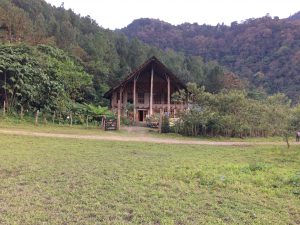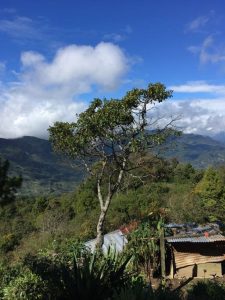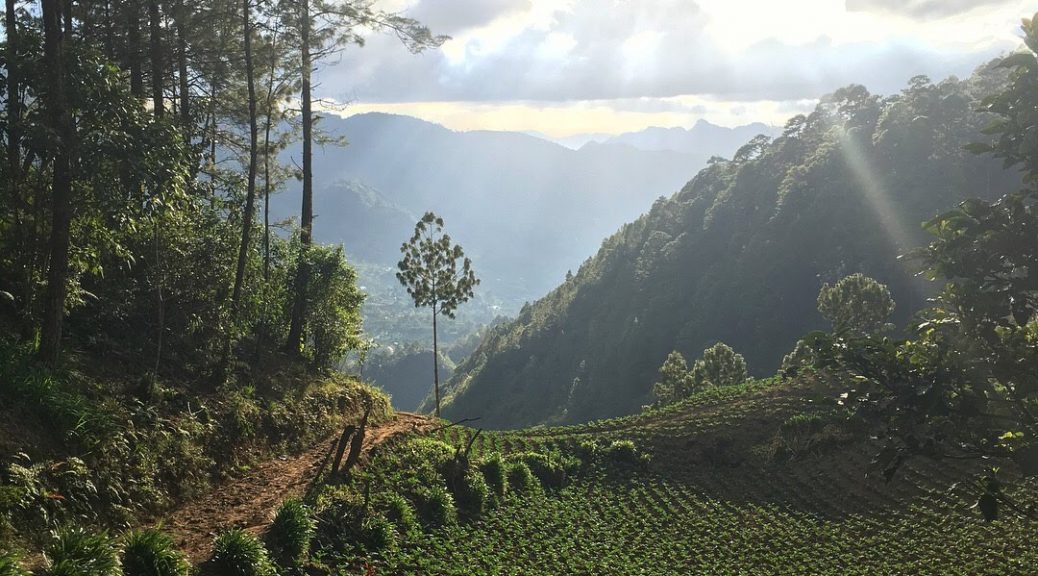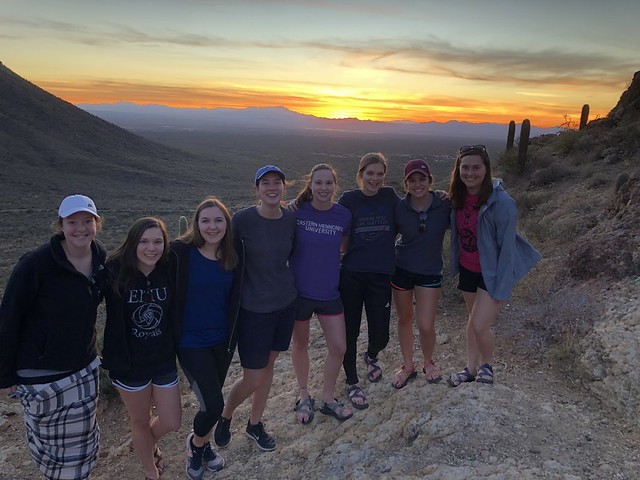We’re back from five breathtaking days in Guatemala’s Alta Verapaz, where we stayed with the organization Community Cloud Forest Conservation, led Rob and Tara Cahill, along with teachers and staff from the surrounding Q’eqchi’ communities. CCFC is working with the conservation of the rapidly diminishing cloud forest, as it intersects with the lives and well-being of the people who live there. The work of this organization is far-reaching. There are two main community programs: Kids and Birds, which is a summer-camp-style environmental education experience for children, and Women in Agroecology Leadership for Conservation (WALC). Through WALC, young women learn life skills and leadership, but also plant agroforestry plots, as an alternative form of agriculture that both repairs degraded forest areas and can be a source of nutritionally dense food. CCFC is addressing both social and environmental issues holistically, and coming up with some wonderfully creative solutions.

During our five days in the cloud forest, we spent three nights in the CCFC facilities, which are filled with windows, light, and wood. The facility was built with careful attention to resource conservation. We got to experience composting toilets, showers heated in pipes that ran through wood cook stoves, and meals featuring ingredients like cloud forest spinach. It felt like there was no boundary between “indoors” and “outdoors.” We got to spend a lot of time outside in the cloud forest. We hiked through the forest two different days, both times reaching caves that were historically places of Mayan worship.
Our other two nights were spent with host families, which we all agreed was one of the most difficult things we’ve done so far on this cross-cultural. We were living in houses perched on the edges of the mountains, in the community of Sebob. While there, we ate meals cooked around a fire, interacted with the intergenerational families who were hosting us, and played a lot of soccer. We wheezed up steep hills (our host siblings nonchalantly sprinting ahead of us), slept on boards, bundled in all of the clothes we’d packed, and tried our best not to cough as billows of smoke from cooking fires hit our faces. Even in writing that, I am cringing a little bit. We all know how incredibly privileged we were to be there, how hospitable our host families were, how little we have to complain about in our daily lives. As we walked down that mountain for the last time, I wrestled with feelings of guilt at the bit of relief I felt at returning to the CCFC buildings, with their hot showers and soft beds. These mixed feelings of gratitude and guilt linger with me, as I return to life at school in the city.
That week gave me a lot to think about in regards to how we talk about conservation and issues of environmental stewardship, since this is one of CCFC’s main areas of focus. Because I am an Environmental Sustainability major at EMU, I was particularly interested in seeing the intersection of culture and environment from an angle other than that of the United States. Our relationship with the environment, and how we respond to environmental degradation, are so dependent on where we were born, who our families are, and what our surrounding culture says about environmental stewardship. I saw a lot of similarities between the U.S. and Guatemala in our environmental concerns: the ways that so many of us take for granted our natural resources, our rapidly dwindling forests, climate change as a life-altering force in all of our lives, the cultural significance of agriculture. I also saw differences, and areas where I know we in countries like the United States could learn a lot. The families that we stayed with are connected to their land in a way a lot of us in the U.S. can barely imagine. People here can be a lot more willing to accept environmental degradation, particularly climate change, as fact. As Rob said to us the first morning, for farmers in places like Alta Verapaz, climate change is not a question or something to be debated. They know for a fact that they’re growing papaya where they couldn’t have ten years ago because temperatures are so rapidly increasing.
However, it is important not to romanticize the relationship that many people in communities like Sebob have with their surrounding natural landscape. The cloud forests in Guatemala are suffering from rapidly growing populations and the resulting harvesting of wood (we got to experience those fires firsthand). People are farming on slopes that were never meant to be farmed. One morning, we walked out to see

broccoli fields (broccoli that is sent to schools and prisons in the U.S.) on hills so steep it seems that the farmers could have fallen out of their fields. The results of these practices? Deforestation, but also serious soil loss through erosion and runoff. And I thought the corn fields in Lancaster, Pennsylvania were questionably located. CCFC is working hard to find solutions that enable people in cloud forest communities to not only increase their quality of life, but also conserve their rapidly diminishing natural resources and address contributions to climate change. From the few days that we spent there, it seems like they are doing an incredible job and I only wish that I could have seen more.
Of course, seeing all of this brought up a lot of the usual questions for me, and what I think are some new ones. How are we complicit in the environmental degradation that we saw? I had to think of the 10+ airplanes that I am going to get on this semester, and their huge contribution to climate change. I remembered our trip several weeks ago to the Guatemala City basurero, compared that with the small amount of waste that I saw Q’eqchi’ communities produce, and again held that up against the trash bags that my own family and friends in the U.S. carry out each week. I am holding all of these thoughts with grief, but also considerable hope when I think about organizations like CCFC. I am coming of age in a time in which this work of environmental stewardship is incredibly pressing. I want to mirror the actions that I see from the adults around me: Rob and Tara, the teachers and farmers in Sebob, and people at home, in the U.S., who I know are also taking action.
This week, I am taking away a little bit of that incredible sense of purpose and clarity that we saw in Rob, Tara, and the Sebob community this past week. I leave here thinking about how I can change my own life when I get back to the states, and feeling inspired by the thoughtful action that was demonstrated to us. When I get home, I am looking forward to telling you more stories about what I have seen and who has inspired me during these three months.
-Clara Weybright

